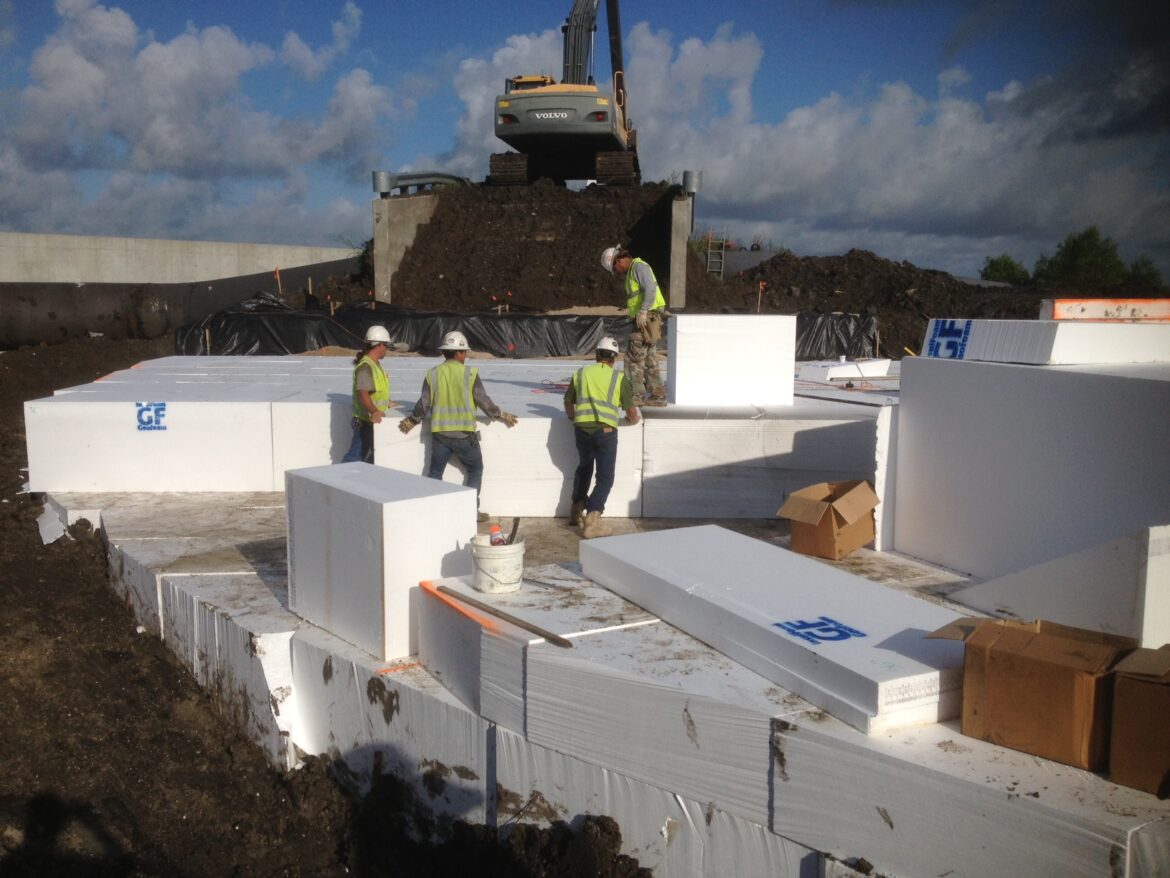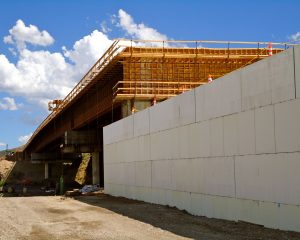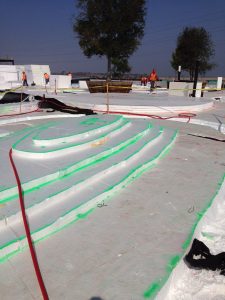
(Geo)Foam Building Blocks
Geofoam Applications in Buildings
Expanded polystyrene (EPS) is commonly used as household and commercial insulation, and the applications of this versatile material expand even further. Geofoam is an EPS product used as a lightweight and cost-effective fill material in various civil and building projects.

Topaz Bridge project in McCammon, ID
Geofoam in short
Although it is lightweight – approximately 0.7 to 2.85 lbs/cu ft, depending on the product type, compared to 110 to 120 lbs/cu ft for soil – geofoam has better bearing capacity than most foundation soils. The material’s compressive resistance ranges from about 317 to 2,678 lbs/sq. ft. at a 1 percent strain. As long as combined dead/live loads do not exceed 1 percent strain, the material will not creep or experience plastic yield.
With a closed-cell structure, geofoam is hydrophobic and dries quickly. As a result, little, if any, weight gain is expected due to water absorption. Unlike other fills, geofoam offers predictable engineered values, which simplifies design and construction. Widely used in infrastructure applications such as road beds and as retaining wall back-fill, geofoam also is well-suited for use in buildings.
The Crowd Goes Wild for Geofoam
Geofoam provides a fast and simple way to created tiered seating for stadiums, amphitheaters, gymnasiums, auditoriums, and other settings that require similar seating arrangements. For such stadium-style seating, crews are able to forgo heavy equipment and hand-place geofoam blocks to achieve the necessary profile. Crews can then either place concrete over the geofoam as shotcrete or as pre-cast panels. Using geofoam greatly simplifies the forming process and eliminates the need for complex tiered soil compacting to form the stepped profile of stadium seating.
Rooftop Oasis

Facebook headquarters’ rooftop garden in Menlo Park, CA
Increasingly in green roofs, building teams are using geosynthetic materials, such as geofoam, to help keep planted roofs light and watertight. Creating landscape contours with soil imposes prohibitive dead loads on roofs, so project teams instead specify EPS geofoam. Designers are able to create natural looking ground contours at a fraction of the weight of soil, while geofoam provides supplemental protection against water intrusion and additional thermal insulation into the roof assembly.
Some of America’s largest companies have installed green roofs. Ford’s Dearborn, Michigan, truck plant final assembly building sports one of the world’s largest living roofs at 454,000 sq. ft. In 2015, Facebook opened its MPK 20 office building in Menlo Park, California, with a 9-acre living roof featuring more than 400 trees, a half-mile walking trail and small hills and valleys.
Putting the Blocks Together
Geofoam is a viable alternative to soil fill in a multitude of building applications. While soil has, and likely will continue to have its place in the building materials list of new and existing buildings, builders have an option in EPS geofoam that will save time, money, and weight in numerous projects.

